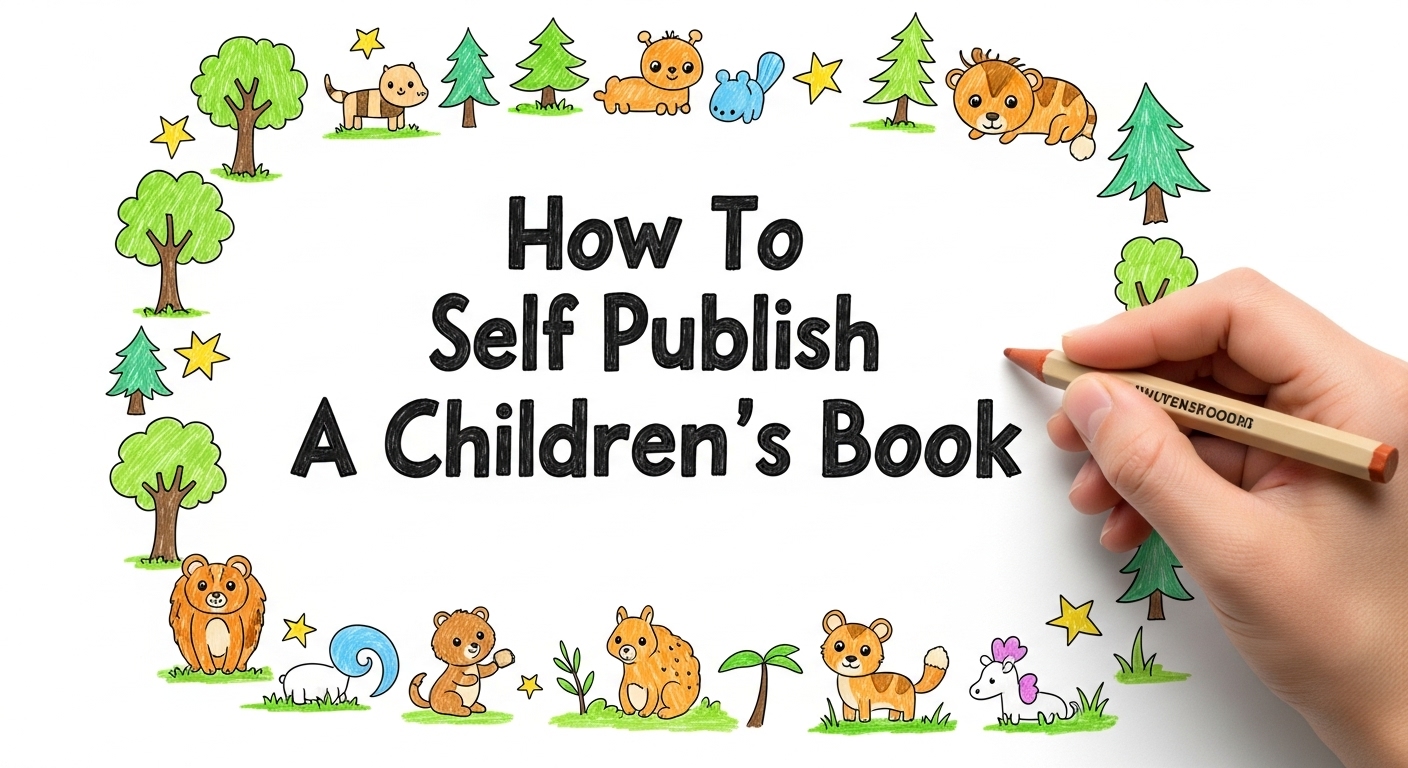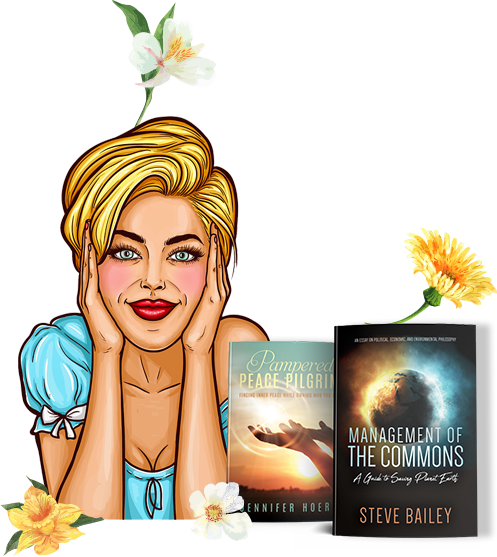
Writing a children’s book can be one of the most rewarding creative endeavors, but getting it published is a different journey altogether. If traditional publishing feels like a long and uncertain road, self-publishing is an empowering alternative that gives you full creative control—from writing and illustrating to marketing and selling. With the rise of digital platforms and print-on-demand services, publishing a children’s book has never been more accessible.
This article walks you through the full process of how to self-publish a children’s book, from initial idea to getting your book into the hands of eager young readers.
Table of Contents
ToggleUnderstanding the Children’s Book Market
Before diving into writing and publishing, it’s crucial to understand the market you’re entering. Children’s books are generally categorized by age group and reading level:
- Board Books (Ages 0-3): Durable books with few words, often interactive.
- Picture Books (Ages 3-7): Heavily illustrated, with limited text.
- Early Readers (Ages 5-9): Simple vocabulary, larger fonts, more text.
- Chapter Books (Ages 6-10): Short chapters, black-and-white illustrations.
- Middle Grade Books (Ages 8-12): More complex stories, often without pictures.
Deciding which category your book fits into helps guide your content, tone, and format decisions.
Develop a Story That Resonates
A compelling children’s story is simple, engaging, and age-appropriate. Here are key elements to consider:
- Strong Characters: Children relate well to characters who face challenges and learn lessons.
- Clear Message: Whether it’s friendship, courage, or curiosity, a strong theme grounds your story.
- Engaging Language: Use rhythmic, repetitive, or lyrical language—especially in picture books.
- Emotional Connection: Kids respond to stories that make them laugh, wonder, or feel empowered.
Don’t underestimate your readers—children are perceptive and love stories that treat them with respect.
Write and Revise Thoughtfully
Start with a strong manuscript. Keep these tips in mind during the writing process:
- Write with Purpose: Focus on clarity and pacing, especially for short attention spans.
- Read Aloud Often: Children’s books should sound good when read out loud.
- Get Feedback: Join writing groups, share your drafts with parents, teachers, or even kids.
- Edit Ruthlessly: Trim anything that doesn’t serve the story. Children’s books demand tight, purposeful writing.
If you’re unsure about your manuscript, consider hiring a children’s book editor to refine the language, structure, and tone.
Collaborate With an Illustrator
Unless you’re a professional illustrator yourself, you’ll likely need to hire one. Children’s books are visual by nature, and good illustrations elevate the story. Here’s what to consider:
- Style Consistency: Choose an illustrator whose style fits your story’s tone.
- Page Planning: A picture book typically has 32 pages. Work with your illustrator on page layout.
- Rights and Contracts: Clarify whether you are buying full rights or licensing artwork.
Communication is key. Provide a manuscript and vision but let the illustrator bring their creativity to the table.
Design and Formatting
Professional formatting and design are essential to producing a polished book.
- Trim Size: Choose a standard size (e.g., 8.5″x8.5″, 6″x9″) appropriate for your book type.
- Fonts and Spacing: Use readable fonts. For picture books, larger font sizes are standard.
- Image Placement: Make sure images align with text and don’t interfere with readability.
- Bleed and Margins: Be aware of print requirements such as bleeds and safe zones.
Many authors work with designers or use specialized tools to layout their books, especially if they include full-page illustrations.
Get an ISBN and Copyright Your Work
An ISBN (International Standard Book Number) is necessary for selling your book in bookstores or online retailers. You’ll need separate ISBNs for each format (paperback, hardcover, eBook).
Although your work is automatically protected under copyright law once it’s written, you may choose to officially register it with your country’s copyright office for additional legal backing.
Choose a Publishing Platform
There are several self-publishing avenues to consider:
- Print-on-Demand (POD): These services print books as orders come in, eliminating the need for large inventory.
- Ebook Platforms: Perfect for chapter books or early readers who read on tablets or e-readers.
- Offset Printing: Ideal for high-quality full-color books if you plan on bulk printing.
Research each platform’s costs, royalties, and distribution options to find the right fit for your goals.
Pricing Your Book
Setting the right price is a balance between competitiveness and profitability. Consider the following:
- Production Cost: Higher for full-color illustrated books.
- Market Comparison: Look at similar books in your category and format.
- Distribution Fees: Some platforms take a cut of the sale price.
Aim for a price that reflects the value of your book but remains accessible for parents and educators.
Launch and Market Your Book
Your book is done—now it’s time to share it with the world. Here’s how to build momentum:
Build an Author Platform
Establish your presence as a children’s author:
- Create a website with your bio, book info, and contact.
- Start a blog or newsletter.
- Use social media platforms popular with parents and educators.
Organize a Launch Plan
- Plan a release date and build anticipation in the weeks leading up.
- Offer free previews or behind-the-scenes content.
- Reach out to bloggers and influencers in the parenting or education space.
Get Reviews and Endorsements
- Ask early readers (parents, teachers, librarians) for honest reviews.
- Encourage readers to leave reviews on retail sites and book platforms.
Connect with Local Communities
- Donate copies to schools or libraries.
- Offer author readings or virtual classroom visits.
- Sell or display your book at craft fairs or indie bookstores.
Marketing a children’s book is often grassroots—it’s about building genuine relationships with those who influence young readers.
Consider Professional Services
Self-publishing doesn’t mean doing everything alone. Hiring professionals for editing, illustration, formatting, or marketing can greatly enhance your book’s quality and success. Consider:
- Professional editors for developmental or copy editing
- Illustrators for custom artwork
- Designers for print layout and covers
- Marketing consultants for outreach and launch planning
Budget for these services if you want a high-quality finished product.
Monitor Sales and Plan Your Next Book
Once your book is live, track your sales, reader feedback, and market performance. Tools from publishing platforms can help you monitor which formats sell best and where your audience is located.
Most successful children’s authors build a series or collection of books. If your first book connects with readers, continue developing stories with the same characters or themes.
Final Thoughts
Self-publishing a children’s book is a creative journey that requires passion, patience, and persistence. While it comes with challenges—like managing multiple roles and upfront costs—it also provides unparalleled freedom to shape your story exactly the way you envision it. Whether you’re telling a story that’s been burning inside you for years or creating a tale inspired by your child, self-publishing makes it possible to share your voice and vision with young readers around the world.
With careful planning, thoughtful storytelling, and strategic promotion, your book can find a home on bookshelves, in classrooms, and in the hearts of children everywhere.
FAQs
Q: How long should a children’s picture book be?
A: Typically 500–800 words for ages 3–7. Word count can vary depending on the story and age group.
Q: Do I need an illustrator if I’m not one?
A: Yes. Children’s books rely heavily on visuals. Hiring a professional illustrator is highly recommended.
Q: Can I sell my self-published children’s book in bookstores?
A: Yes, but many stores prefer traditionally published titles. Focus first on online platforms, local shops, and direct sales.
Q: How much does it cost to self-publish a children’s book?
A: Costs vary widely. Budget $1,000–$5,000 for professional editing, illustration, formatting, and printing.
Q: Should I create a series or standalone book?
A: If your book is successful and the characters resonate with readers, a series can build a loyal following and increase sales.





